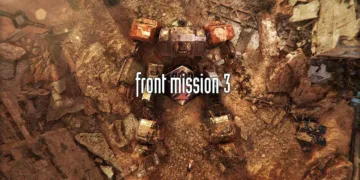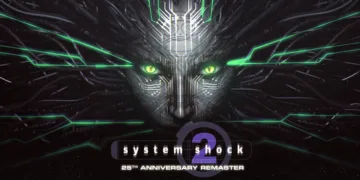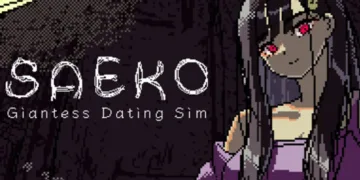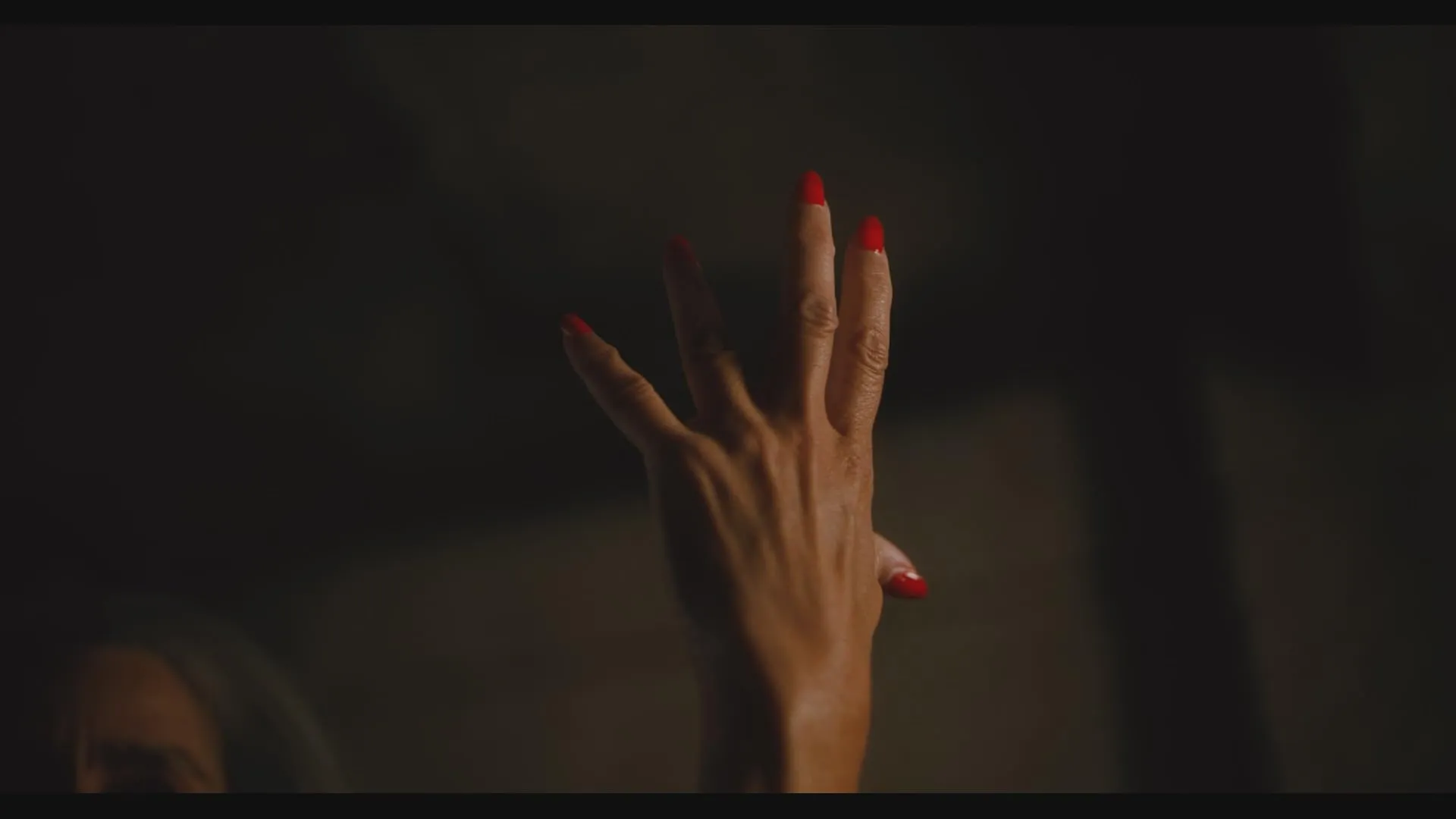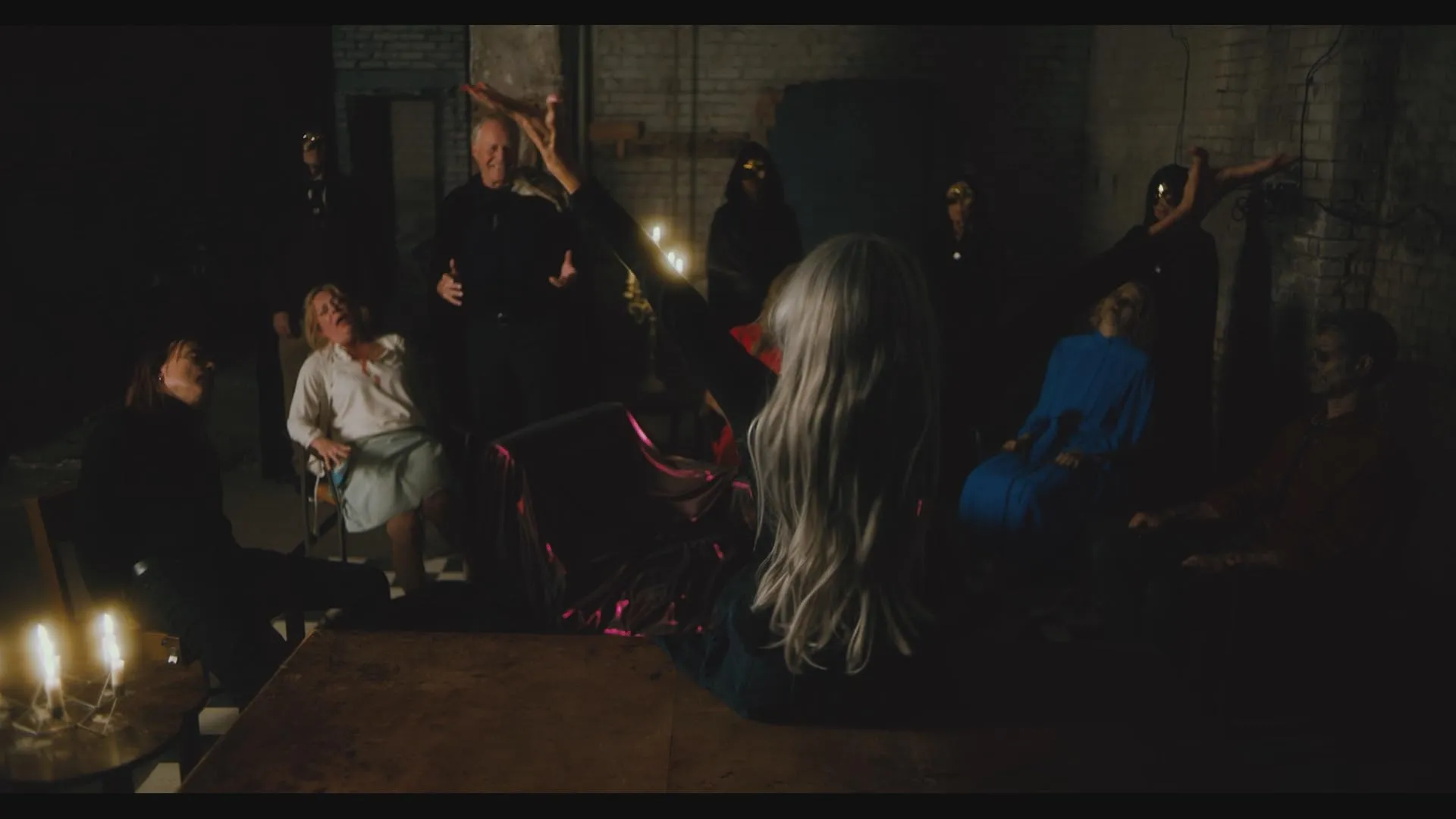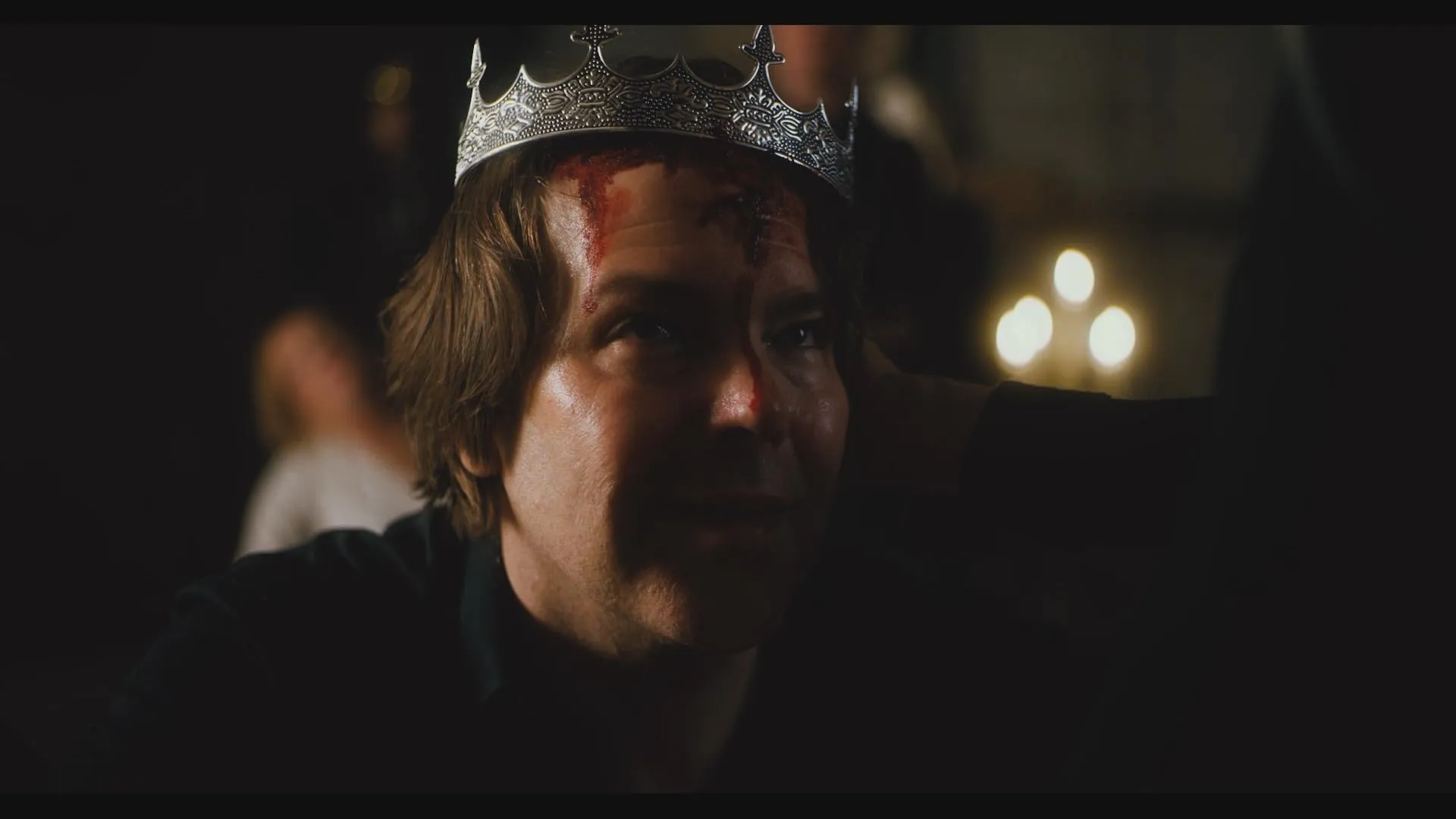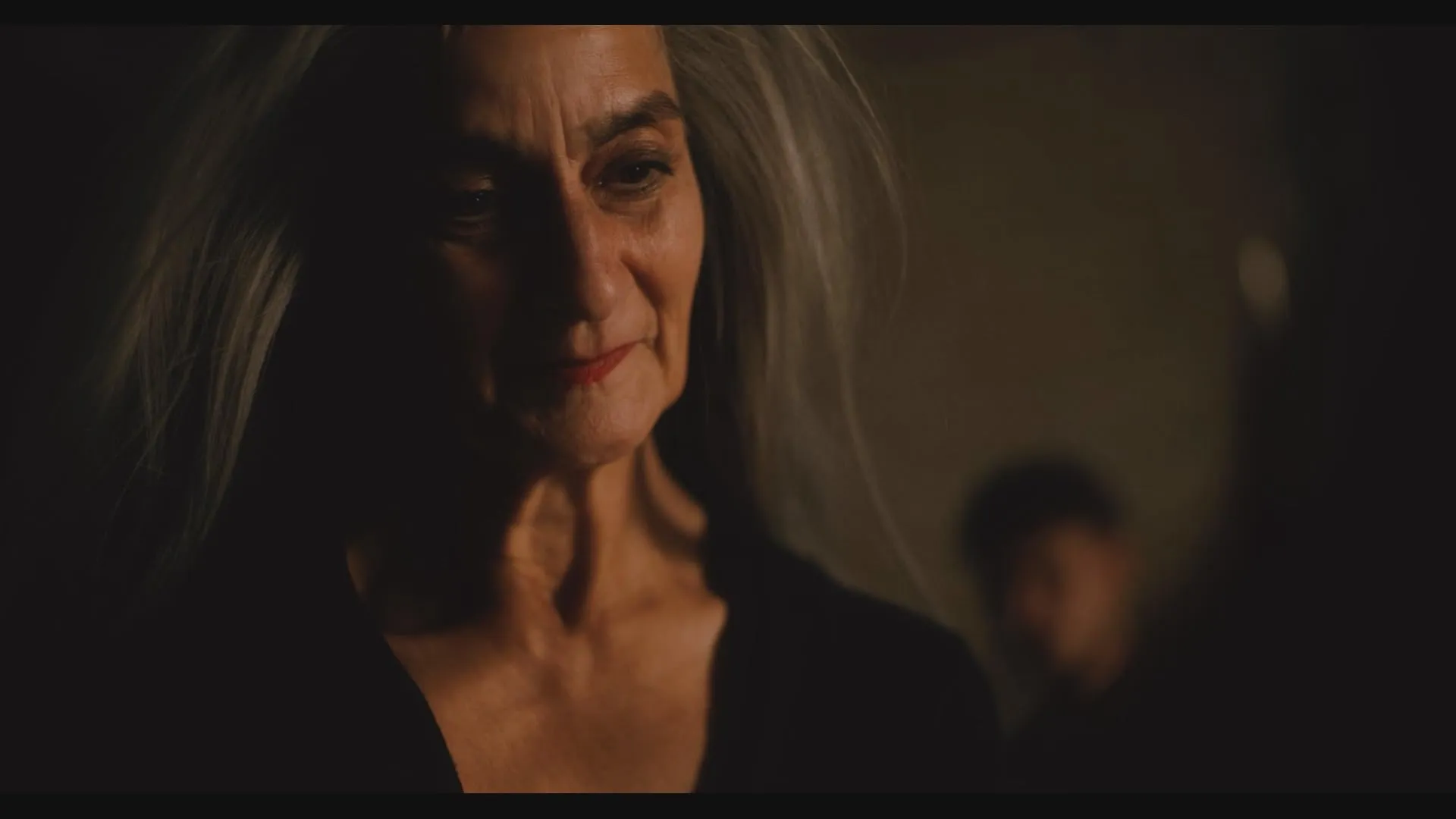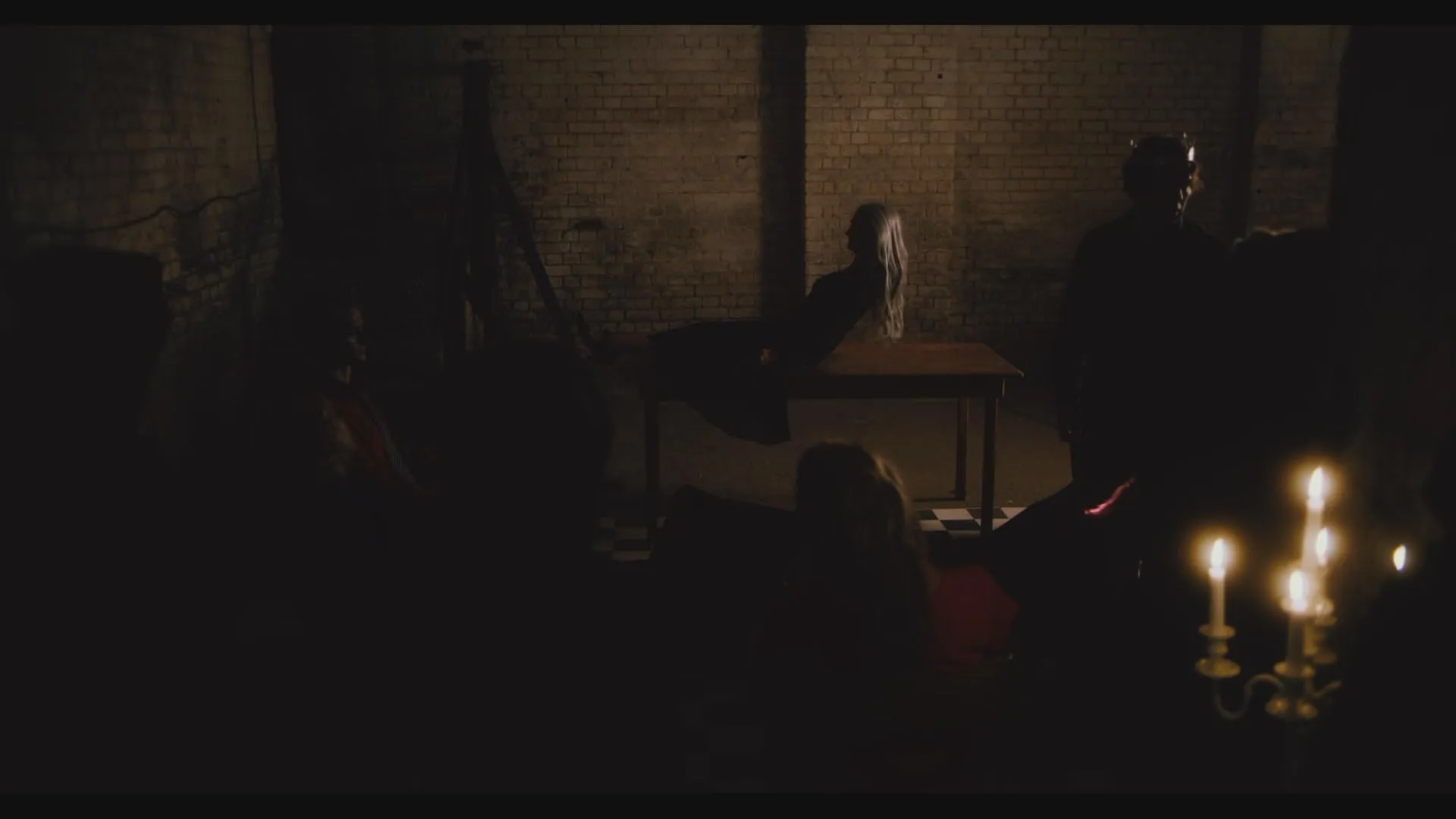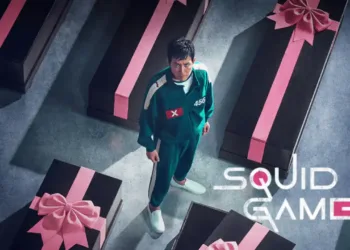The narrative unfolds in “Inherit the Witch” like a ragged family quilt, with pieces patched together with love and frayed edges. The story begins with a seemingly benign birthday celebration for twins Cory and Jessie in 1984, which feels like a nostalgic dive into youthful delight at first glance. However, beneath the surface, this reunion is laced with ominous undercurrents, as Pamela’s strange family friend presents spells implying an occult legacy.
As the film progresses to the present day, we see Cory—now a man troubled by estrangement and loss—return to his family’s ancestral house following the death of their father. This juxtaposition of past and present is more than just a narrative device; it is a disturbing reminder of unsolved traumas and hidden memories.
Flashbacks intercut the unfolding story, revealing the family’s collective denial and the sinister truths beneath their civility. The framework ingeniously manipulates time, allowing the audience to peel back layers of familial dysfunction and magical heritage, leading to a succession of surprising yet, in some ways, sadly foreseeable revelations.
Yet, as I reflect on the film’s development, I can’t help but wonder what it says about our family legacies. The rituals, betrayals, and unspoken grudges ring with a disturbing and relatable familiarity. In some ways, this narrative serves as a mirror, reflecting the complexities of my familial ties, where love frequently coexists with resentment. The film’s structure pushes us to consider not only the characters’ decisions but also our own—how much do we choose to sacrifice for the sake of tradition, and at what cost? It’s a chilling thought that remains long after the titles roll.
The Weight of Bloodlines
At the heart of “Inherit the Witch” is Cory, a guy burdened not just by the legacy of his family’s occult legacy but also by the emotional wreckage of estrangement and denial. Returning to the New Forest, his quest feels like a hesitant discovery of hidden facts. I reflect on my own experiences with familial secrets—those terrible realities that linger like shadows, frequently unspoken but always felt.
Cory’s struggle confronting his past is evident; he alternates between a desperate longing for connection and an instinctive retreat into self-preservation. His connection with his partner, Lars, adds another layer of complication, functioning as both a haven and a reminder of his chaotic familial relationships. It’s a delicate dance that many of us are all too familiar with: how love can heal and intensify our scars.
The estranged sister Fiona represents a different facet of this familial fabric. Her motivations are rooted in a desire for reconciliation and a desperate urge to reclaim her own narrative after years of silence. She embodies emotional depth in a film that occasionally borders on kitsch. Fiona’s character growth evolves in a genuine and authentic way, reminiscent of how siblings struggle to repair misunderstandings. Her story reflects the universal desire to be heard and validated in a family environment that frequently feels stifling.
Then there’s Rex and Pamela, two characters who cast long shadows over Cory and Fiona’s lives. Their motivations are inextricably linked to the family’s terrible history, with each representing the tempting draw of power and the consequences of unrestrained ambition. With his slippery appeal, Rex represents chaos, threatening the fragile order that Cory and Fiona want to construct.
The puppeteer Pamela adds a layer of diabolical mystery, eliciting curiosity and horror. Their interactions with the siblings are a powerful reminder of how family can feel like a double-edged sword, bringing support while threatening to strike deep. While grappling with these characters, I’m left to ponder how we all negotiate our identities inside the maze of family—how our roles may both liberate and bind us.
Framing the Uncanny
The visual landscape of “Inherit the Witch” is as nuanced and complicated as its characters, transporting viewers to a world where the familiar transforms into the strange. The camerawork is stunning, with various framing approaches that convey closeness and remoteness.
I am captivated by how the camera lingers on faces, capturing fleeting expressions that reveal more than dialogue could ever hope to. It’s reminiscent of family reunions, where a glance may convey volumes—emotions seething beneath the surface, begging to be recognized.
The usage of split screens is particularly noteworthy, a daring approach that both disorients and intrigues. At moments, it feels like a visual representation of the characters’ divided relationships, with each half of the screen presenting its own story but never fully converging. This tactic can be unsettling, but that is part of its brilliance; it compels us to confront the chaos in their families, much like we frequently confront it in our lives. This style choice makes me grapple with whether it adds to or detracts from the narrative, which is a testament to my biases as a viewer who frequently seeks clarity amidst artistic experimentation.
Editing shapes the film’s rhythm, bringing us through moments of tension and relief. The pacing can feel uneven, which, while annoying at times, also reflects the emotional turmoil of its characters. Rapid cuts heighten the sense of urgency during critical passages, whereas lingering views create a disturbing quiet that permits dread to sink in.
The soundtrack, too, is captivating—a mix of disturbing noises and a score that alternates between dreamy and harsh. I am reminded that sound can elicit visceral responses that are often stronger than sight alone. The lack of sound speaks volumes in quiet moments, echoing the unspoken truths that linger in the air. It’s a delicate balance that the film strikes with a mix of grace and discomfort, leaving me wondering how well art can capture the complexities of our daily lives.
Shadows of Legacy
“Inherit the Witch” takes us on a labyrinthine journey through family dynamics, with echoes of intergenerational pain reverberating through every interaction. I can’t help but reflect on my familial history, those intricate webs of love and resentment that shape who we are, while I watch Cory grapple with the demons of his past.
The film skillfully depicts how unsolved issues can fester, turning familial relationships into chains of duty and guilt. With Fiona representing the desire for connection and Cory alternating between denial and desperate attempts at reconciliation, each character represents a facet of this struggle. It’s a reminder of how families frequently serve as both a haven and a war, where love can become entwined with unresolved rage and perplexing allegiance.
The idea of real and intangible inheritance pervades the narrative, prompting issues about what we pass down to future generations. The family’s occult legacy is a metaphor for the secrets we inherit, the hidden responsibilities that shape our identities. I reflect on the legacies we all carry, often without realizing their importance, as Cory discovers troubling realities about his family history. How many of us feel burdened by our parents’ implicit expectations or the weight of unresolved issues? The film portrays this well, constructing a tapestry of familial expectations that feels all too familiar.
However, the portrayal of witchcraft adds a fascinating layer to this exploration. In this case, witchcraft serves as a magnifying glass for the family’s darker inclinations rather than just as a plot device. Pamela and Rex’s rituals function as tangible and figurative forms of control, reflecting how power relations may pervert familial love into something malevolent.
The supernatural elements add to the film’s fundamental theme, revealing how the past can haunt the present unexpectedly. As I ponder the consequences of this portrayal, I’m left wondering: Do we risk repeating the trauma cycles by honoring our familial legacies? The film dances on the edge, leaving me to grapple with the shadows that linger in my life.
A Dance of Shadows and Laughter
“Inherit the Witch” bravely walks the edge between horror and comedy, a balancing act that feels thrilling and perilous. As I immerse myself in its world, I am reminded of how laughter frequently serves as a barrier against the darkness that lurks beneath our surface—a coping strategy that many families, including mine, have used in moments of tension.
The tone of the film shifts between true terror and outrageous laughter, creating an unpredictable yet compelling atmosphere. This interplay keeps the audience on its toes, never knowing whether to brace for horror or laugh at the ridiculousness unfolding before them.
The humor frequently appears in unexpected places, such as ridiculous dialogue during critical moments, where characters make melodramatic claims that would feel right at home in a farcical play. These moments, like Rex’s flamboyant antics or Pamela’s extravagant rituals, lighten the narrative’s weight, providing viewers with a little respite before returning to the dark depths of family secrets.
However, this juxtaposition raises doubts regarding the efficacy of such contrasts. Can we honestly laugh at the absurdities of our lives when they are linked with deep suffering? The film allows us to ponder this as it masterfully navigates the murky rivers of humor and horror, leaving me both amused and uneasy, reflecting the messiness of life itself.
Crafting Shadows on a Shoestring
The production quality of “Inherit the Witch” is unmistakably low-budget, challenging, and enriching the viewing experience. It’s intriguing to see how budget limits shape creative decisions, frequently leading filmmakers to innovate in ways that larger companies might overlook.
In this situation, limiting finances forces the creators to prioritize atmosphere and narrative over enormous set pieces or high-tech wizardry. I reflect on similar small films that have captivated me with their creativity, where every dollar spent feels like a testament to the filmmakers’ love and resourcefulness.
The practical effects and cosmetics artistry are mixed, yet their imperfections add charm. The film’s focus on physical effects rather than CGI gives it a visceral sense that can be deceptively powerful. For example, the makeup utilized during moments of horror, while not as polished as in big-budget competitors, has a rawness that heightens the film’s disturbing themes.
It’s a reminder of how limits may frequently inspire creativity; witches’ wrinkled hands or the frightening transformations feel genuine and grounded. However, I wonder if this roughness detracts from the overall impression. Or, ironically, does it encourage us to go deeper into the film’s emotional core? In grappling with these problems, I’m reminded of my admiration for art that embraces its shortcomings, allowing a view into the creators’ hearts.
Reflections in the Dark
“Inherit the Witch” is a film that capitalizes on its strengths, notably in terms of performance. Each actor adds a dimension that almost feels physical, changing what could have been a standard horror narrative into a rich tapestry of emotional complexity.
Cory’s internal struggle, depicted with honest sensitivity, connects strongly, bringing back memories of my conflicts with familial expectations. Fiona’s fierce drive to reclaim her narrative is equally riveting, reminding her of the power of seeking authenticity amid chaos. These performances anchor the film, making even the most bizarre moments grounded in reality.
However, the film is not without defects. Pacing issues periodically disturb the flow, leading to periods where the tension fades, leaving me yearning for the gripping dread that the early scenes so masterfully evoked. Furthermore, while certain characters are rendered, they teeter on the edge of likability, confounding my emotional engagement. Was this a purposeful choice, a remark on the imperfections of family dynamics, or simply a failure in execution?
Ultimately, “Inherit the Witch” has the potential to leave a lasting impression on the horror genre. Its combination of humor, heart, and eerie imagery prompts new dialogue about the complexities of family and legacy. Reflecting on its influence, I’m torn between respect for its ambition and a nagging feeling of what could have been a reminder of the tenuous balance that characterizes the greatest and worst of our cultural tales.
The Review
Inherit the Witch
"Inherit the Witch" expertly combines horror and humor, with outstanding performances delving into the complexities of family dynamics and intergenerational pain. Its creative use of practical effects and intriguing narrative elicits both laughter and introspection. However, pace flaws and character likability can sometimes subtract from its impact. Nonetheless, the film's raw authenticity and emotional depth offer a new take on the horror genre.
PROS
- Strong performances that convey emotional depth.
- Creative blend of horror and humor.
- Effective use of practical effects enhancing authenticity.
CONS
- Pacing issues disrupt narrative flow.
- Some characters lack likability.
- Occasional uneven execution of themes.

































